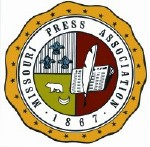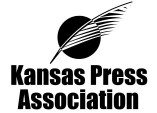Infotrust-thurs-wrap
AGENDA /
WHO'S COMING /
REGISTER /
ABOUT VENDORS /
LODGING /
IVP FORM /
ANDAC VISION /
REQUEST INFO /
RECOMMENDED READING /
LIVE STREAM/BLOG /
TWITTER STREAM



Contents
- 1 “From Blueprint to Building: Making the Market for Digital Information"
- 2 FILE NOTES: Blueprint/Build Thursday wrapup up session
- 2.1 BREAKOUT ONE: The Information Trust Association “thought experiment”
- 2.2 BREAKOUT TWO: Ways to attract new readers and revenue
- 2.3 BREAKOUT THREE: Multistate Digital Task Force meeting
- 2.4 BREAKOUT FOUR: Technology group
- 2.5 DISCUSSION
- 2.6 THREADS ON THE DAY
- 2.7 Question for Friday: What can we get accomplished for you?
“From Blueprint to Building: Making the Market for Digital Information"
An action congress for trust, identity and Internet information commerce serving newspapers and beyond
June 23-25, 2010 / Reynolds Journalism Institute / Columbia, Mo.
FILE NOTES: Blueprint/Build Thursday wrapup up session
Here are Bill Densmore’s contemporaneous notes of the Thursday afternoon wrap-up session at “From Blueprint to Building.” A raccounteur from each of the four sessions described their discussion.
BREAKOUT ONE: The Information Trust Association “thought experiment”
Raccounter: Bill Densmore
- Convening of the “willing”
- Not necessarily new organization
- Consider standards for sharing users/content
- Key words privacy, openness, identity, ownership – TRUST
- Future of “dark archives”
- Standards recommendations – the AARP model?
- Involve academia – ACE
- Involve state press association execs
- Involve national press association execs
- Leverage convening power of RJI
- “How do you find trusted information?”
BREAKOUT TWO: Ways to attract new readers and revenue
Raccounter Stephanie Padgett
- Monetization follows engagement, so getting level of engagement to get to new level is critical.
- Folks shared things that rally engagement. Travis from Shaw has “PlanitNow.com” a local community events site. It’s a way to share revenue so if ticket sales for the local play happen on that site they get a cut of it.
- TCTV part of the Meredith Corp., implementing rewards program to reward behavior. Brings in eyeballs … money.
- ClickFuel, Colby Ward, a company designed to help folks take their local digital advertising and monitor that performance to improve it.
- WebUltra – concept is if you think about what Pandora did for music … find music you like and expose you to related stuff. WebUltra will do that for news.
Real life examples of engagement. What else could we dream of?
- Help people become consultants to sales organizations. Could local newspaper help them figure out what to do long term.
- Self-service – attract the long-tail advertisers.
- Leveraging real estate to engage with community. What if we opened up our newspaper buildings and used that to train future photographers, community members as reporters, welcome them in and engage with community (Bill: Example: the paper in Michigan)
- What if newspaper were the “do good provider” in your community? Build facilities, bridge, could we be that person to make a difference. To be a collaborator to solve problems rather than be just the reporter.
- A lot of specialty organizations – reporters with niches. As local communities are stripped of those reporters, could there be collaborative efforts with national organizations to tap into say a science reporter without having to hire that person full time.
- Martin Langeveld adds: Discussion of the need to be more involved in the transaction that follows the ad. Online becomes a network where many of the transactions and services are going direct. If we can do that the retail side, that should be a much richer source of revenue.
BREAKOUT THREE: Multistate Digital Task Force meeting
Raccounteur: Jo Martin
- Spent a lot of time talking about what ifs, determined the real question is do we go forward with the ability to collect digital files with the eventual use of those files to be determined by newspapers individually and the for-profit collectively.
- Split off into three distinct committees and assigned a task force member to each of them. Corporate structures and bylaws etc. Each will meet once or twice before July 30 meeting in Kansas City. (will add in committee detail).
BREAKOUT FOUR: Technology group
Raccounteur: Rick Lerner
Rick Lerner: Technology group – set out to discuss how can technology assist newspapers with what they want to do and where do the want to go?
- Recognition that we should be using technology better than newspapers have been to make data more accessible and valuable to customers.
- Example: Better enable customer to see depth of an article they are interested in or find background information. Google search doesn’t do it.
- New AP application looks promising and has interactive capabilities and that should be a guide or direction to head.
- One of more surprising comments: Many newspapers still don’t have a web presence. Not sure if technology issue or a function of them not wanting to put up content for free.
- Finding tech proven to maintain the return on your investment of journalism could make a lot more information available on the web.
- Engaging customers is a good way to maintain readership and build community; a number of smaller papers surviving more easily than larger ones perhaps because they engender sense of community vs. larger papers in hand-to-hand combat with other competitive sources.
- A side and fascinating area: Discussion not of technology exactly. The notion of focusing your journalists on doing the stories that require journalists – big-j – and inviting the community to assist with reporting of more mundane types of information that need to be written. Have a reporter photographer start ball rolling on community events and invite the community to provide pictures of events, too. Experience is this seems to result in journalists producing more big-J journalism.
DISCUSSION
- Q: Is the news industry problem unlicensed content leakage or lack of easy payment method?
- Discussion: More a problem of an inadequate advertising model.
- Eyeballs equal money. Having great success pulling in eyeballs but the money is not following. People are engaged, unique visitors are doubling.
- Problem: Even people in breakout agree they don’t click on, and avoid ads. Most likely advertisers know that.
- Where is the real problem in the way the reporting is presented on the web: is the problem is that it is available for free or that there is leakage. Curious to discuss whether allowing information to be sent to friends is a problem.
- Big bullet point: New technology that’s coming out now even opposed to a year or two ago is providing the opportunity for the industry to make significant changes in a lot of areas, including whether or not to pay. Now that these apps are coming out, they may pay for phone/pad apps and that notion may leak back to the web.
- Changes in the way advertising is tracked and reporter. Concern that information the advertisers are finding isn’t that good. Technology might allow that to be much better.
- Discussion of web vs. app. Discussion of an application approach to distribute premium content.
THREADS ON THE DAY
- Densmore: More personalized engagement
- Bill Monroe: Talked in breakout, are we on the right track is this something we need to do. Unanimous yes, need to move forward. Sometimes get hung up on specifics about how what will or won’t work – too involved in tactics and not strategy. Too early to talk about costs, for example. Simple point: Does it make a mistake for newspapers to start a company to collect all of the content of all the newspapers associated with that company and then figure out how to use it? Tearsheets, archives, etc. Mission statement doesn’t mentioned specific applications. First digitize and then leverage into benefits. Not even talking about the web, talking about the print product and using that on the web to benefit newspapers and there are many ways that can be done.
- Discussion: Biz plan captures PDFs of the print product. But does form matter? More and more newspaper content is not what is on the website. PDF has different application in the mobile world. May consider taking about lexicon of PDF.
- Ed Lambeth: Where do you find data about the individualized experience?
- Bill Monroe: Why can’t there be software that when you touch an article, the computer understands that’s what I’m interested in?
- Martin Langeveld: This is one of the notions within Circulate™.
- Densmore: This is concept of inference vs. expressed preferences.
- Jo Martin: “A newspaper of one.”
- Stephanie Padgett: Like the Music Gnome project – took three years (to yield Pandora.com)
- Bill Monroe: Other application of this is on the advertising.
- Dean Mills: Likes to cite the wedding use case, the extend to which a system understands by your browsing habits that you are interested in aspects of putting on a wedding and shows you relevant information as a result.
- Bill Monroe: The whole relationship between the newspaper and advertising is changing. Suggesting a coupon.
- Observation: Yahoo Newspaper Consortium already doing this. But that doesn’t get results for the advertiser either.
- Langeveld: That’s behavioral targeting. What Circulate™ is talking about is more preference oriented. You opt in.
- Stephanie Padgett: News industry shouldn’t be at Yahoo’s mercy. The fact that you are coming together under your own auspices is the most critical thing that you are doing.
- Jo Martin: All these theories/capabilities are terrific. But it is such a low dollar amount. When can we get it to the point to pay for the journalists who provide the content?
- Shaw Newspapers exec: How many times can you segment the audience in a small market? If the segment is only seven people what difference does it matter if it is a high CPM. It’s hardly any money.
- Dan: Remember you are a market that large people are pursuing.
- Bob Kasabian: If the content is compelling and relevant, people are going to find it. Get back to the basics of what we do. The milkman brought milk when he was a kid. He went and looked for the milk and found it in the store.
Question for Friday: What can we get accomplished for you?
- Jo Martin: Here case: Six reporters on a 4,000-circ. paper. In a town of 6,500 people, they sell probably $50K worth of online advertising in a year for that website. The newspaper sells $798,000 worth of advertising. How do you equate that? When they went online, the lost 400 subscribers. Then went behind a paywall five years ago and are up 200+ print circ since that change. They expanded offerings on the web beyond the content on the newspaper – all kinds of web products, without taking expensive news content and putting it online for free.
- Stephanie Padgett: You can do that were you don’t have a competing TV station.
Chris Miller: There is a tension or lack of decision about whether we are pursuing this for social benefit or revenue streams. Those aren’t mutually exclusive but come to a conclusion quickly.
Kasabian: Answer is yes and yes. Without revenue, no social mission.
- Dan Kruger: My question about the newspaper business is who will lead? You’ve unintentionally ceded power to all kinds of people and yet you still have reporters on the ground, who know how to write, fact-check and spell. The rest of electronic media is vast recirculation of what you do. There is confusion: You don’t have the power? No. Who will lead? Because you are still the producers of almost all the original news content there is. I don’t have an easy answer for that, but for what it’s worth, I think you will get what you put in. …. My hope is it is not your replacement, it is someone who has a background and professionalism. I’m providing a solution, but it won’t make any difference if somebody doesn’t grab hold of it and lead.
- Bob Kasabian: In the processing of putting the business plan together, it became apparent it was the grass-routes publishers who were going to lead. How long it is going to take I don’t know.
Dan Kruger: I think you have as much chance to lead in the middle of the country as either coast does. I’m fairly certain if somebody leads people will sign up to follow.
- Bill Monroe: He is getting numerous emails. State press association boards wants to sign up. They are looking for leadership, for a solution. This may be part of it.
- Kasabian: You can act from inspiration not desperation. “I’m approaching this from inspiration. I think we’ve got an idea here that could be transformational, it could be the basis of what is to come . . . not what’s going on today but 2-3-5 years from now. We think there is enough grass-roots support that we have a pretty good shot of moving the market.”
- Bill Monroe: History is that press associations get a lot accomplished when they work together.

